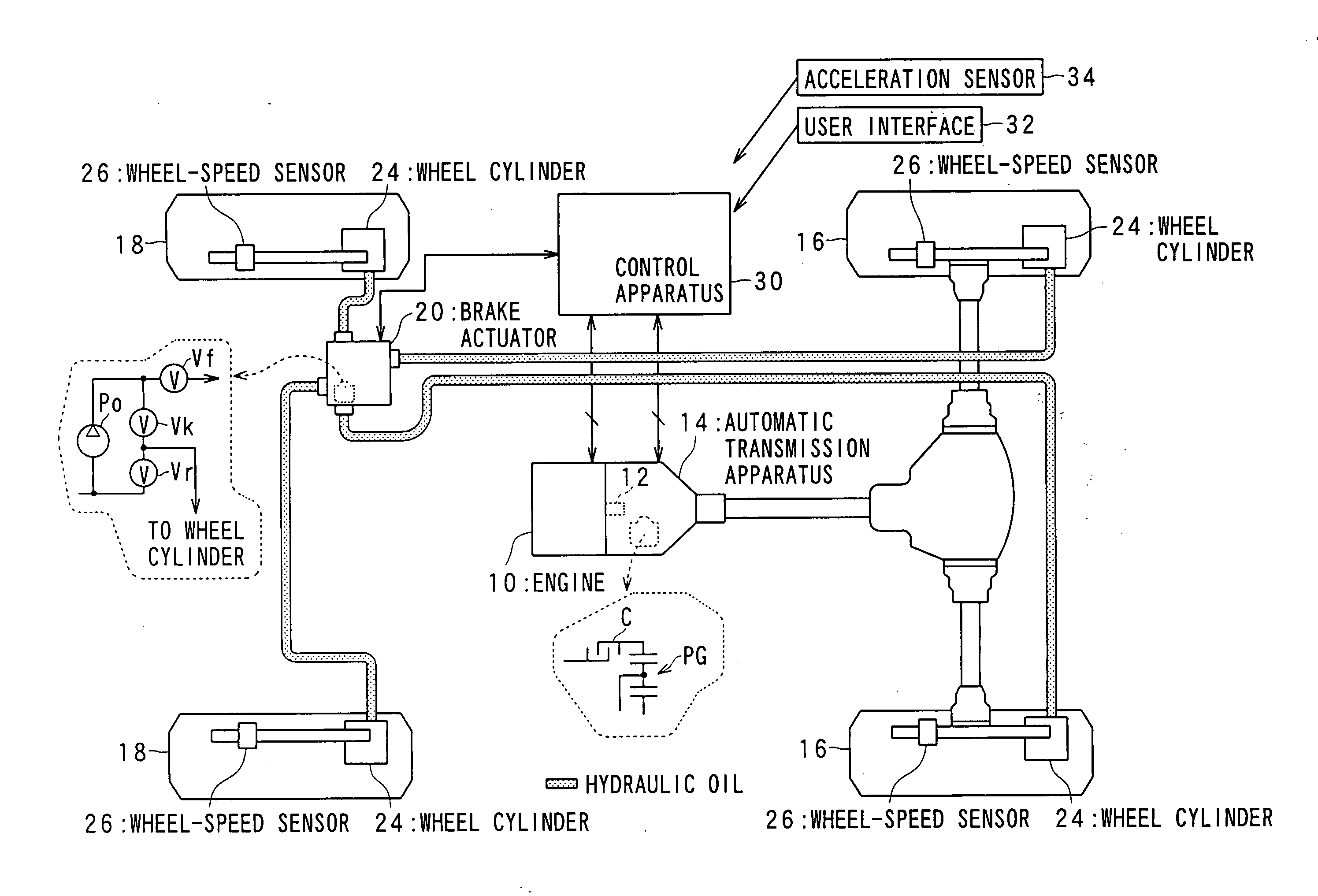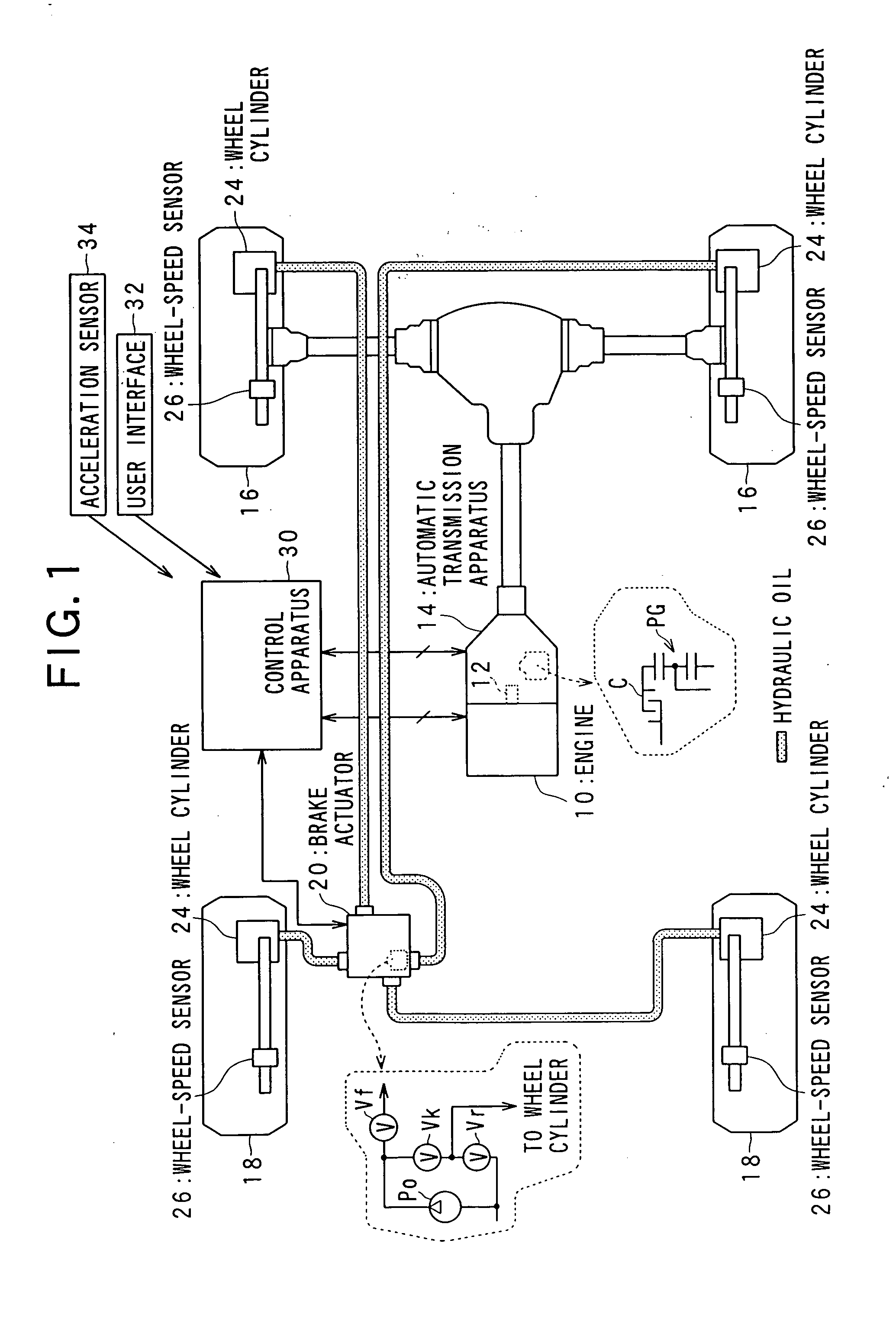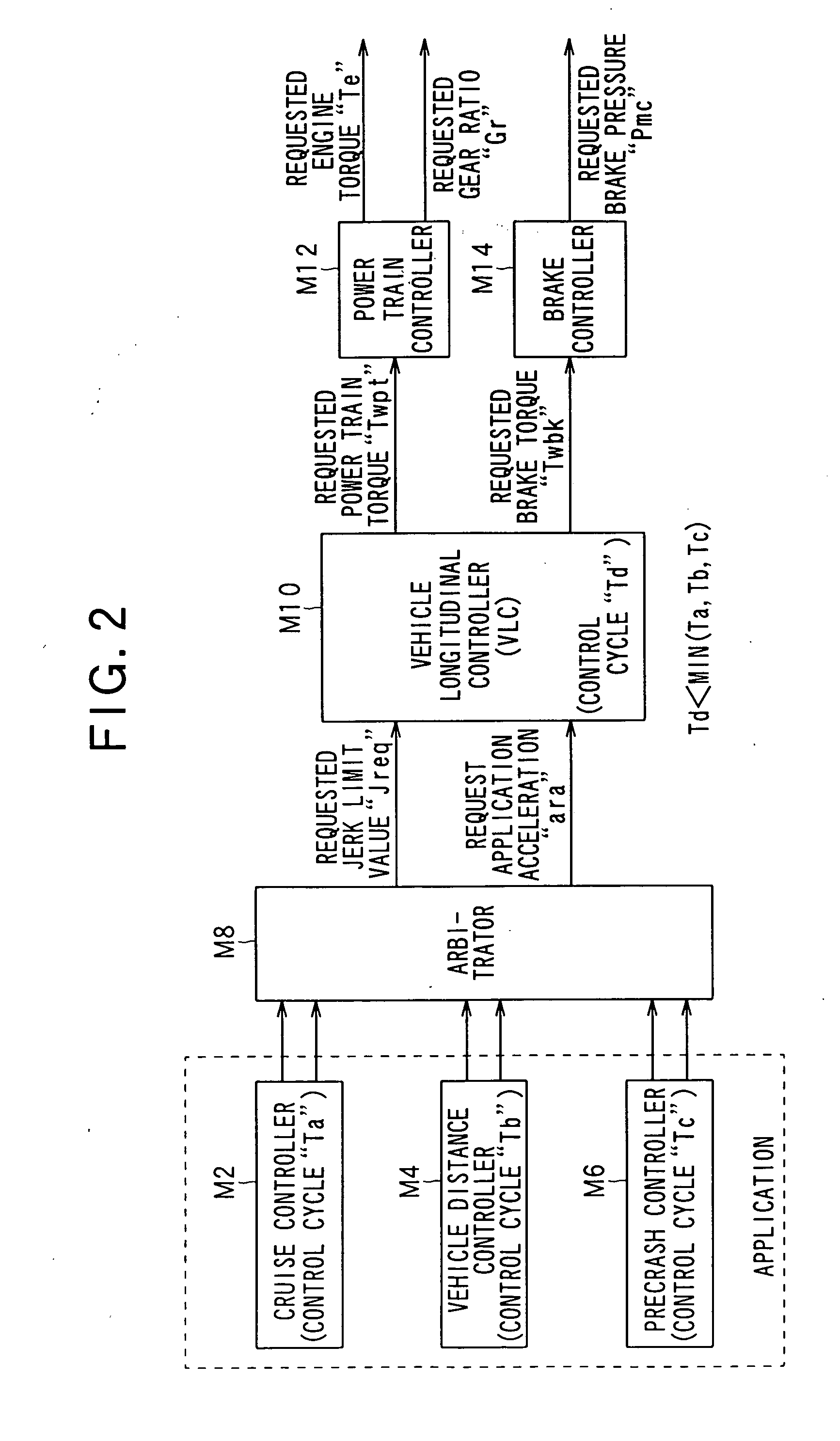Method and apparatus for controlling acceleration of a vehicle
a technology of acceleration and apparatus, applied in the direction of braking system, instruments, analogue processes for specific applications, etc., can solve the problems of difficult optimal control, different response characteristics for the change of torque,
- Summary
- Abstract
- Description
- Claims
- Application Information
AI Technical Summary
Benefits of technology
Problems solved by technology
Method used
Image
Examples
first embodiment
[0043]With reference to the accompanying drawings, hereinafter will be described a vehicle control apparatus according to a first embodiment of the present invention.
[0044]FIG. 1 illustrates a general configuration of the vehicle control system, according to the present embodiment.
[0045]An engine 10, a gasoline powered internal combustion engine, includes a crank shaft 12 to which an automatic transmission apparatus 14 is connected. The automatic transmission apparatus 14 is provided with a torque converter and a planetary gear automatic transmission. In the planetary gear automatic transmission, any of a plurality of power transmission paths formed by planetary gears PG is selected, depending on the engagement conditions of a clutch C and a brake (not shown) as friction elements. The planetary gear automatic transmission is adapted to realize a gear ratio according to the selected power transmission path. The torque of the crank shaft 12 of the engine 10 is changed by the automatic...
second embodiment
[0109]With reference to the drawings, hereinafter will be described a second embodiment of the present invention, focusing on the differences from the first embodiment. In the present embodiment, the identical or similar components and steps to those in the first embodiment are given the same reference numerals for the sake of omitting explanation.
[0110]In the present embodiment, at the start of use of the brake actuator 20, switching of the gains in the feedback control is delayed. Thus, the gains can be prevented from becoming excessively large immediately after the start of use of the brake actuator 20, when braking force Is insufficient.
[0111]FIG. 14 shows a series of processes associated with the manipulation of the brake actuator 20, according to the present embodiment. These processes are repeatedly performed by the control apparatus 30 at a predetermined time interval, for example.
[0112]As shown, in the present embodiment, when the brake flag “fB” is in an on-state, the brak...
PUM
 Login to View More
Login to View More Abstract
Description
Claims
Application Information
 Login to View More
Login to View More - R&D
- Intellectual Property
- Life Sciences
- Materials
- Tech Scout
- Unparalleled Data Quality
- Higher Quality Content
- 60% Fewer Hallucinations
Browse by: Latest US Patents, China's latest patents, Technical Efficacy Thesaurus, Application Domain, Technology Topic, Popular Technical Reports.
© 2025 PatSnap. All rights reserved.Legal|Privacy policy|Modern Slavery Act Transparency Statement|Sitemap|About US| Contact US: help@patsnap.com



